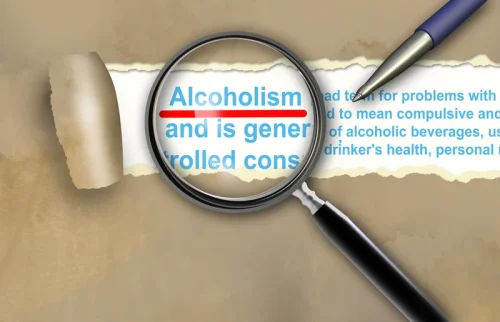
While functional alcoholics may not binge drink, they do drink more alcohol than the average person. Most functional alcoholics are middle-aged (around 41) who started drinking around age 18. The chronic severe subtype is the least prevalent, accounting for only about 9 percent of alcoholics.13 However, this group is the most severe, with heavy drinking occurring almost daily. To understand this complex and unique disorder, it’s essential to learn the different types of alcoholics.
- Undistilled alcoholic beverages are a staple in many cultures and regions worldwide.
- Kombucha spiked with additional alcohol (“hard kombucha”) will have a higher alcohol content.
- Bold and stiff, it’s a drink best served in a rocks glass over ice.
- Made with Kentucky bourbon, simple syrup, mint leaves and crushed ice, mint juleps are traditionally served in frosty pewter cups.
Inpatient Treatment
- Other beverages can be created by fermenting different types of sugars.
- At this level, motor skills may be impaired, which can lead to serious injuries and severe mood swings.
- Beta alcoholism involves serious medical complications due to excessive drinking.
- Chronic Severe alcoholics have the highest rates co-occurring mental disorders, including anxiety, depression, bipolar disorder, and antisocial personality disorder.
- In fact, according to a 2021 National Survey on Drug Use and Health (NSDUH), 29.5 million Americans ages 12 and older have alcohol use disorder (AUD).
At The Recovery Village, we offer evidence-based treatment methods that can address every aspect of each client’s treatment needs. We want to guide you down the path to recovery – call today to learn more. The NIAAA researchers found that there were five distinct patterns of alcohol dependence. To achieve sobriety, he says, treatment must focus on “complete abstinence and elimination of other forms of substance abuse and also mainstreaming their behaviors” so they function better in society. In addition, research shows that moderate and high levels of drinking during pregnancy can increase the chance of the child developing leukemia after birth, the AACR said.
Experiences
- One serving of pale lager (like a Pilsner) typically has 4–6% ABV and around 150 calories.
- Treatment providers can help you to determine what form of treatment will be optimal for your specific needs and circumstances.
- This subtype of alcoholics is the most likely to seek treatment and the most heavily represented type of alcoholic in a treatment program.
- Still, professional guidance is often needed to provide effective support.
- A Tom Collins is essentially a fizzy, spiked lemonade made with sparkling water, lemon juice, simple syrup and a London dry gin, like Bombay Sapphire.
Binge drinking can bring blood alcohol concentration (BAC) to 0.08 percent. At this level, motor skills may be impaired, which can lead to serious injuries and severe mood swings. For adolescent binge drinkers, this could mean interference with brain development, which may potentially result in deficits in cognitive functions.
What Treatment Options Are Available for Alcoholism?
Only 17% of functional alcoholics have ever sought help for their alcohol dependence. Those who do tend to make use of 12-step programs and private health care professionals. Few young adult alcoholics use other drugs or have legal problems. On average, they drink about 143 days each year, and they typically consume five or more drinks at a time. Few seek help for their drinking, but when they do, they gravitate toward 12-step groups as opposed to private treatment. Co-occurring disorders are optimally treated with an integrated program that can help to manage both disorders at the same time.

The 5 Types Of Alcoholics
There are several different classification systems that identify types of alcoholism and alcoholics. These typologies are created to effectively understand the cause of or the influence behind alcoholism, and hopefully with that knowledge, be able to treat them. Rehabilitation programs are an excellent treatment option for people with severe symptoms of the condition. They remove you from your triggers and focus on helping you heal for the period you are in them.
Treatment providers can help you to determine what form of treatment will be optimal for your specific needs and circumstances. Alcoholism is a manageable disease; treatment is necessary to manage it. The presence of any two symptoms within a one-year period can result in a diagnosis of alcohol addiction. As previously mentioned, however, there are multiple types of alcoholic subtypes. The following checklists for each type can help you determine which subtype you might fall into.
How Do People Become Alcoholics?
Our staff is here to provide the help you need to realize a better future. Almost one-third of alcoholics in the United States are young adult alcoholics. 5 types of alcoholics Many of these teens and early twenty-somethings are college students in environments that promote excessive social and binge drinking.

Understanding Alcoholism: 5 Different Types of Alcoholics

While treatment for all alcoholics remains generally similar, some may respond better to different addiction support types than others. It can happen on individual occasions (binge drinking) or habitually. Some people may transition between different alcoholic types based on changing life circumstances, but this probability depends on various factors, including their response to treatment. When heavy or binge drinking is the norm in a family, people tend to fall into drinking as normal behavior.

Some kinds of alcohol are distilled, which concentrates their alcohol content making them more dangerous. If you or someone you know suffers from alcohol use disorder, seek treatment as soon as possible. These treatment options can help you or your loved one take the first step toward sobriety and live a healthier, happier life. If you are looking for the right treatment option for yourself or someone you know, it is important to speak with a doctor or mental health professional about the best action plan.
